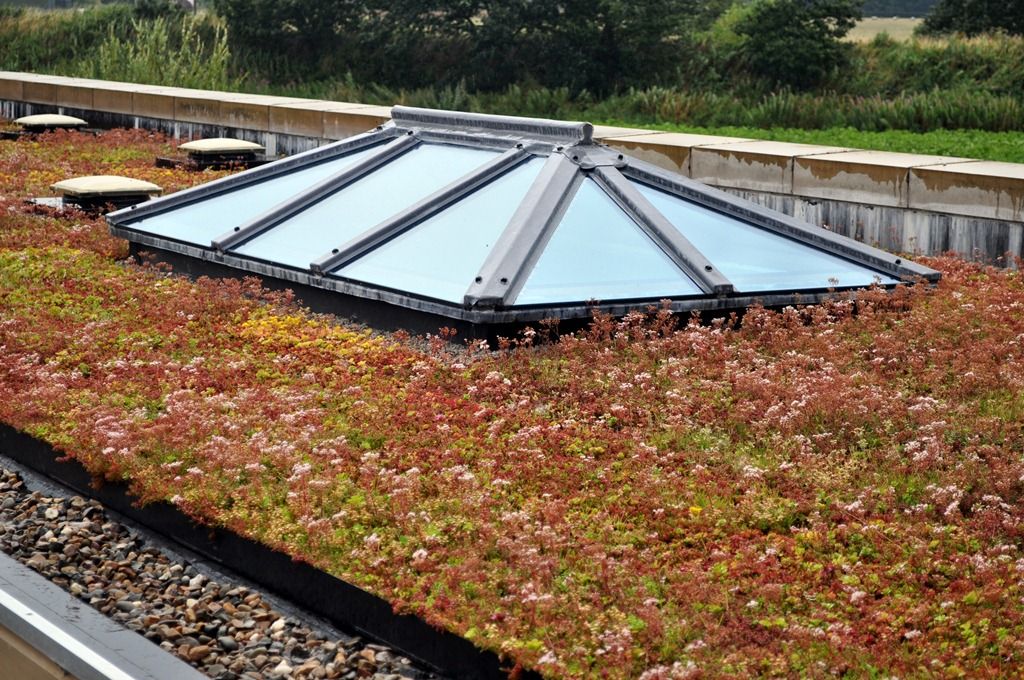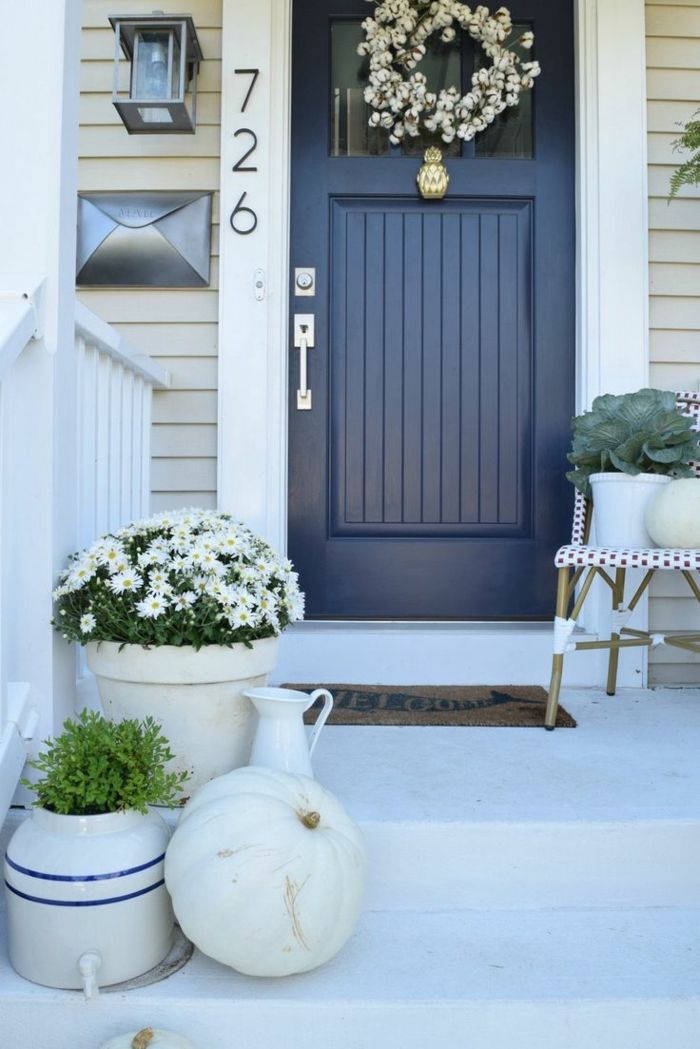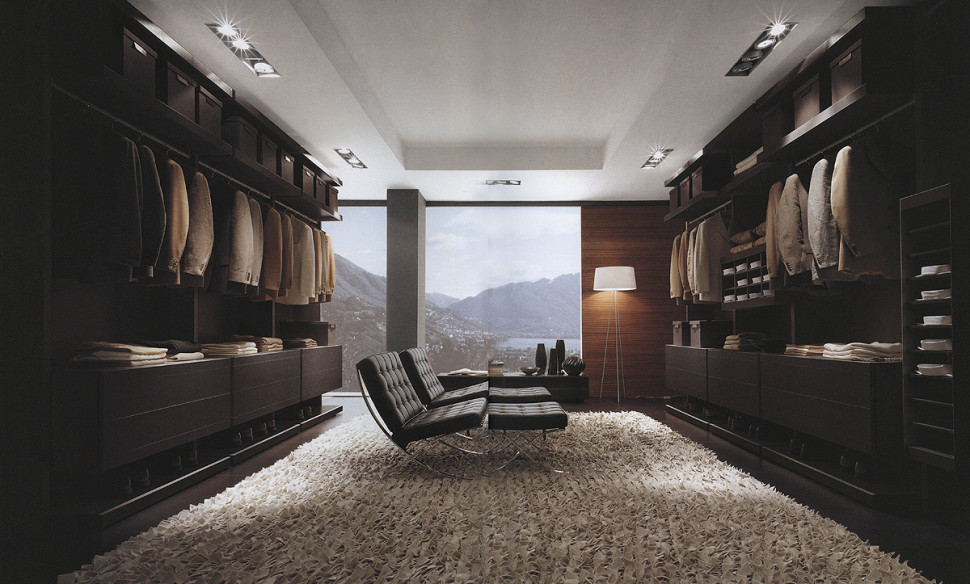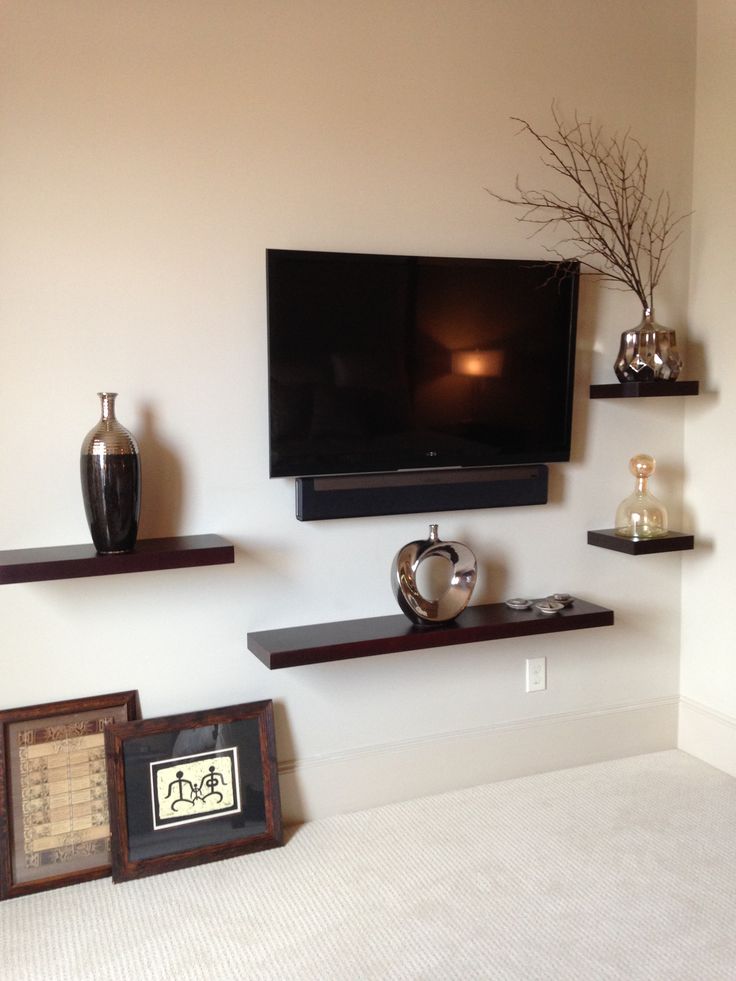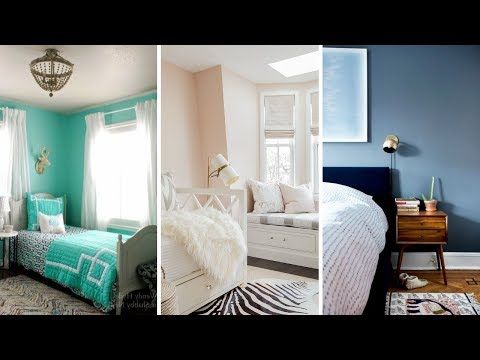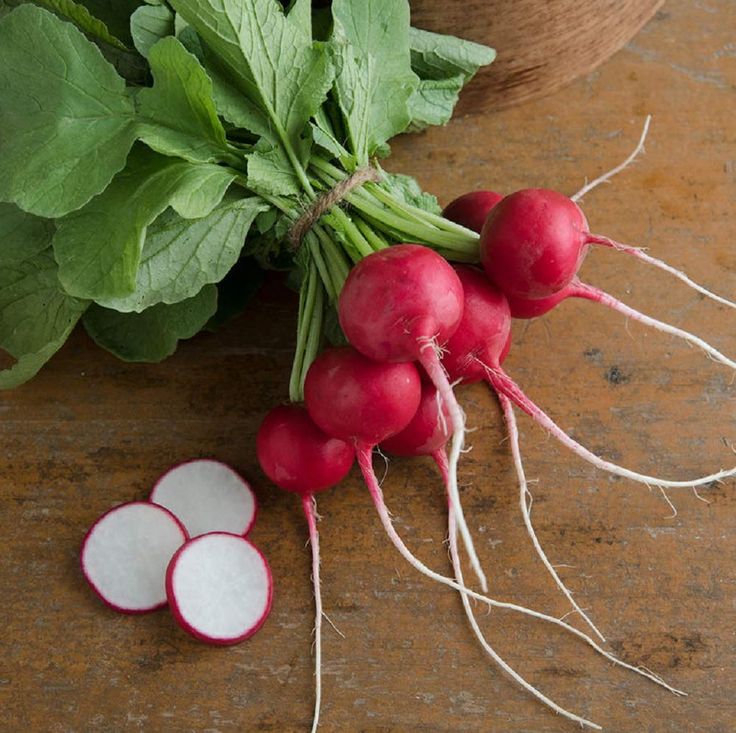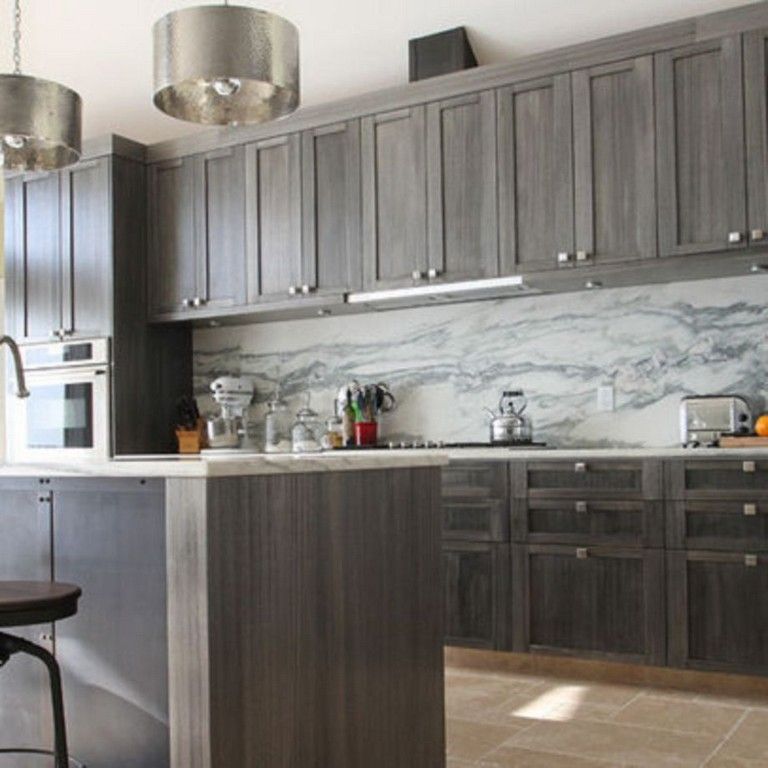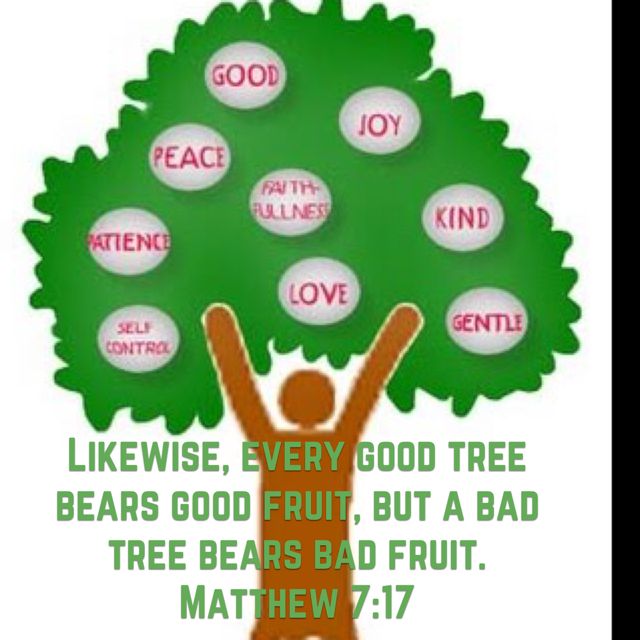Sedum roof systems
Everything about Sedum and a Sedum roof
Sedum and extensive green roofs are so intertwined that in practice people often talk about Sedum roofs. Why is that? What is Sedum and what makes Sedum so suitable for extensive green roofs?
Green roofs with Sedum
The natural properties of Sedum make this succulent plant extremely suitable for roof greening. Sedum - also often known as stonecrop - is a genus of the Crassulaceae family of succulent plants. This family consists of four to five hundred species and thousands of different varieties. Succulents are plants that store water in a part of the plant. Sedum stores water in the leaves, and this is why Sedum is often referred to as a leaf succulent.
The metabolism of Sedum differs from other plants. At night, carbon dioxide is absorbed through the stomata and converted into malic acid. During the day, under the influence of sunlight, the malic acid is decomposed and photosynthesis takes place. The stomata in the leaves are only open at night. During the hot and dry day, moisture loss is minimized.
Many Sedum species originate from the northern hemisphere and around the Mediterranean in particular. However, Sedum can also be found in North Africa and South America in dry and/or cold areas where water may be scarce. Thanks to its natural properties, Sedum requires little maintenance in green roofs: it requires little (rain) water and nutrients.
What is a Sedum roof with Sedum mats?
An extensive green roof or Sedum roof is a roof with vegetation that is more or less self-perpetuating and that can further develop and maintain itself. Roughly speaking, extensive green roofs have a substrate thickness of between 4 and 15 cm and a weight of 30 to 220 kilo per m2. When Sedum vegetation is applied to a green roof, the weight is approximately 30 kg/m2.
Making your roof more sustainable with Sedum is - in contrast to intensive green roofs - a low-maintenance and cost-saving greening method.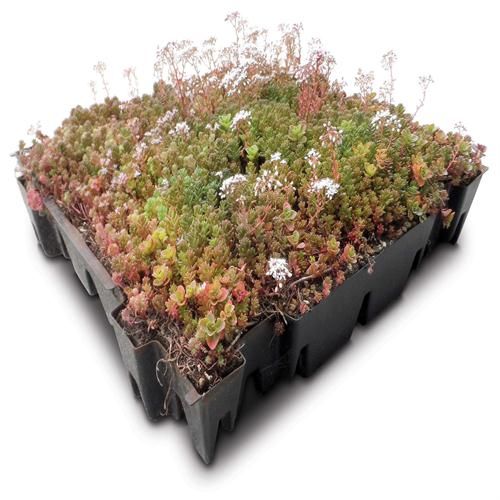 By applying Sedum mats instead of loose Sedum plants, installation is very simple and this saves you a huge amount of time. In addition, the maintenance costs are much lower, because the Sedum mats already have a good rooting and require much less water after installation, than with loosely planted plants.
By applying Sedum mats instead of loose Sedum plants, installation is very simple and this saves you a huge amount of time. In addition, the maintenance costs are much lower, because the Sedum mats already have a good rooting and require much less water after installation, than with loosely planted plants.
All benefits of Sedum for a green roof in a row
- Sedum has very shallow roots, a key requirement for an extensive green roof, considering the modest depth of the substrate layer.
- Sedum is a lightweight method to create a green roof, thanks to the modest substrate layer depth.
- Sedum can withstand drought, for example in very hot summers.
- Sedum is easy to maintain and requires little water and nutrients.
- Sedum is very resilient to diseases and insects pests.
- Sedum has great adaptability under extreme weather conditions.
Why opt for a Sedum roof of Sempergreen?
Sempergreen conducts on-going research into the quality of Sedums and other plants for extensive green roofs.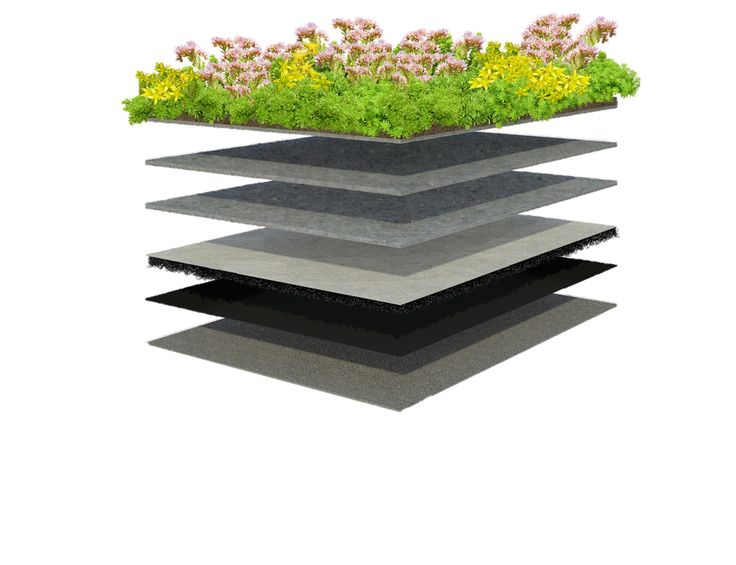 Thanks to the many years' experience, Sempergreen has gathered much knowledge and expertise about Sedum varieties and other plant species. By no means are all Sedum varieties suitable for use on extensive green roofs or in a Sedum vegetation blanket. For instance, tall or large-leaved Sedum varieties are less suitable, because the plants may break or become damaged when the mat is rolled up or laid out. Sempergreen selects only the most suitable Sedum varieties for cultivating the various vegetation blankets. So you can be confident that your green roof really will remain green all year round. Naturally!
Thanks to the many years' experience, Sempergreen has gathered much knowledge and expertise about Sedum varieties and other plant species. By no means are all Sedum varieties suitable for use on extensive green roofs or in a Sedum vegetation blanket. For instance, tall or large-leaved Sedum varieties are less suitable, because the plants may break or become damaged when the mat is rolled up or laid out. Sempergreen selects only the most suitable Sedum varieties for cultivating the various vegetation blankets. So you can be confident that your green roof really will remain green all year round. Naturally!
Free quotation
Do you have questions about green roofs with Sedum or do you want a free quotation? Then please contact us. We look forward to your request.
View our Sedum-mix blankets for Sedum roofs
Traditional green roof or lightweight Sedum roof?
Posted on Wednesday 11 August, 2021You wish to install an eco-roof on your project, but you don't know what kind of green roof system to use? In this article we explain the difference between a traditional and a lightweight Sedum roof, and what you should consider before purchasing.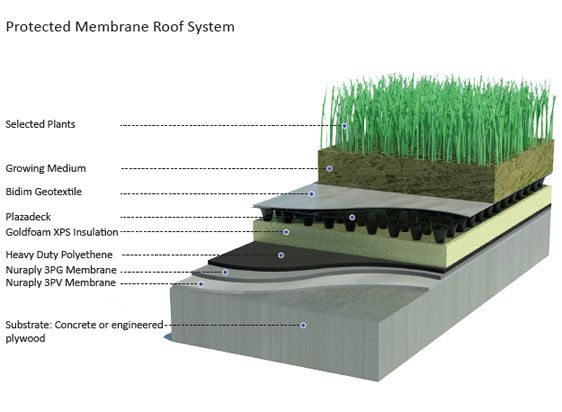 Finally, we show you how to install these living roof systems simply and easily.
Finally, we show you how to install these living roof systems simply and easily.
Traditional Green roof construction
A traditional (extensive) green roof system consists of 3 construction layers: a drainage layer, a substrate layer and a Sedum-mix blanket. The drainage layer collects rainwater. It comes with a filter fleece to prevent substrate from ending up in the rainwater drain. The roof garden substrate (a special substrate for green roofs), consisting of a mixture of lava, pumice and compost, acts as a nutrient-rich growth medium in which the green roof plants grow. The substrate layer has a permeable effect and is produced in accordance with FFL guidelines.
Finally, there is the Sempergreen Sedum-mix blanket. This vegetation blanket has been pre-cultivated for at least 95% at our nursery and contains 6 to 8 different species of Sedum. This hardy plant makes a Sedum roof more durable than a grass roof, because it can survive long droughts and extreme weather conditions and doesn’t need to be mown.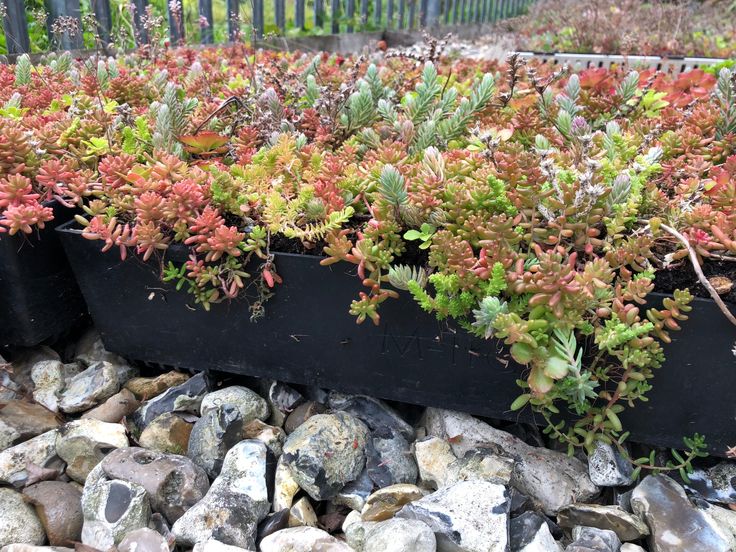 The traditional Sedum roof can be applied at a roof pitch of 0 to 25 degrees.
The traditional Sedum roof can be applied at a roof pitch of 0 to 25 degrees.
How to install a traditional Sedum roof
Lightweight Sedum roof construction
The lightweight Sedum roof system also consists of 3 layers and, just as the traditional green roof, contains a drainage layer with filter fleece. In contrast to the traditional Sedum roof, this green roof system includes a substrate roll made of mineral wool instead of roof garden substrate. Sedum plants can take root well in this lightweight layer. In addition, the mineral wool has an extremely good capillary effect; it soaks up all the rainwater like a sponge and distributes it evenly over the entire roof. This combination of materials makes this green roof system a lot lighter, which means it can be placed on roof structures with relatively little load-bearing capacity. It is therefore ideal for the small roofs of sheds, garages and carports, for example, or large industrial roofs.
It is therefore ideal for the small roofs of sheds, garages and carports, for example, or large industrial roofs.
The maximum saturated weight of this lightweight green roof is 55 kg/m² and it can be placed on roofs between 0 and 25 degrees. The substrate roll also makes it possible to apply the lightweight green roof system on curved roofs. When this vegetation roof is installed, at least 95% of the Sedum-mix blanket is covered with plants and consists of a mix of 6 to 8 different Sedum species.
View all system structures
How to install a lightweight green roof system
Lightweight Sedum tray
For smaller roofs, ready-made Sedum trays, such as the Click 'n go Sedum Tray, are also a good lightweight option. This practical green roof system can be installed on the roof in no time at all.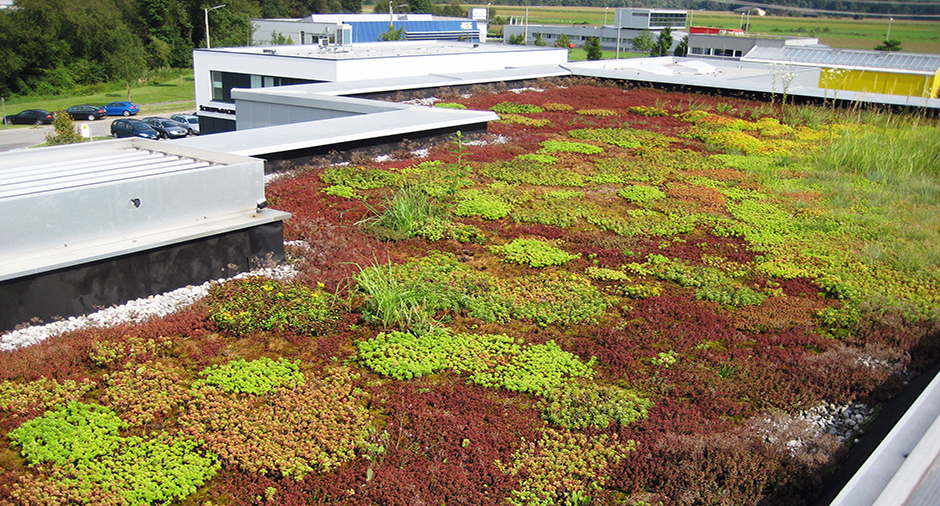
Watch the installation video here
Text continues below image The installation of a green roof with Sedum traysBiodiversity boost
Sempergreen's Sedum roofs make a functional contribution to biodiversity by providing a safe nesting place for birds and nectar plants for insects. Would you like to increase local biodiversity even further with your project? Then you can install a Sempergreen Biodiversity Package on both the traditional and the lightweight green roof system. The Biodiversity Package provides both food and nesting opportunities, enabling the entire life cycle of insects and birds to take place on the green roof.
Checklist purchase green roof
Are you planning to install a green roof? This short checklist shows what you need to consider when choosing and installing your green roof.
1. What is the load-bearing capacity of the roof?
The type of green roof you can install depends on how much weight the roof can support.
2. What is the pitch of the roof?
The slope of the roof decides which kind of green roof can be installed.
3. How old is the roof covering and is it waterproof?
If the roof covering needs to be renewed or is no longer waterproof, we recommend that you replace it before installing the green roof. Did you know that the roof covering lasts twice as long if a green roof is installed on it?
4. Is the roof covering root-resistant?
If it is not root-resistant, we recommend that you install root barrier foil before you start with the installation of the green roof.
5. Are there any subsidy schemes available from the local government, municipality or water board?
More and more regions, municipalities and water boards offer subsidy schemes for installing a vegetation roof. Perhaps you or your client qualify for this.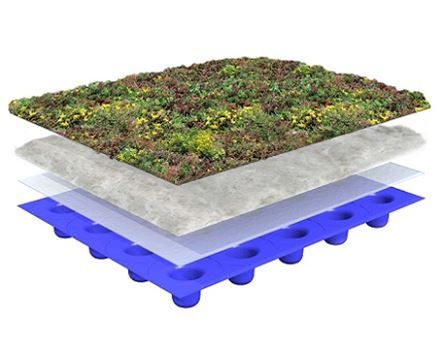
6. Can I make use of the fiscal advantages for entrepreneurs?
In a growing number of countries entrepreneurs and/or housing corporations are eligible for tax benefits when investing in vegetation roofs.
Installation of a lightweight green roof system on a curved roof
Green roof maintenance
Living roofs are natural products , so unlike grey roofs, they do require a little more attention. Yet the maintenance of a Sedum roof is minimal. It generally consists of a minimum of two roof inspections per year and two fertilisation periods. Read more about Sedum roof maintenance here.
In addition to Sedum roofs, Sempergreen also provides biodiverse roof gardens with other types of plants, such as wildflowers, herbs and host plants.
Tailor-made advice
The exact composition, structure and cost of a green roof depends on the roof structure of your project. Our experts are ready to advise you on the right green roof system and you can always contact us for a quote. No strings attached!
Our experts are ready to advise you on the right green roof system and you can always contact us for a quote. No strings attached!
Request an Offer Contact Us
Sempergreen sedum roofs
- Products
- Green roofs and platforms
- Green roof products
- Sedum roofs Sempergreen
Watch the installation video: Construction of a sedum roof with a ground base
Our Dutch partner Sempergreen BV is one of the largest sedum carpet manufacturers in the world with almost 20 years of experience in growing green roof plants.
Sempergreen® Sedum Carpets are green roof decks made from low growing plants that are excellent for Nordic climates. Thanks to succulent leaves, they withstand drought well.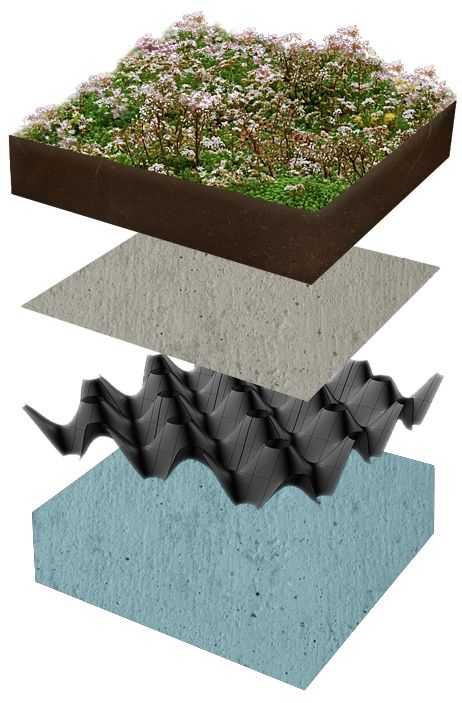 Sempergreen® sedum carpets are a great option for green roofs because their root system grows compactly and shallowly. Stonecrops are unpretentious in nutrition and care and are not susceptible to diseases and infections that are dangerous for insects.
Sempergreen® sedum carpets are a great option for green roofs because their root system grows compactly and shallowly. Stonecrops are unpretentious in nutrition and care and are not susceptible to diseases and infections that are dangerous for insects.
Sempergreen® sedum mats are manufactured to FLL specifications and include a variety of stonecrop plants.
Depending on the type of plant, the flowers are yellow, white, pink or red. Plants that are most adapted to the growing conditions take root best.
Sempergreen sedum mats ®
Sempergreen ® sedum mats consist of a base of coconut fibers and stonecrop plants. Carpets are delivered ready-made. Roll size - 0.6 or 1.2 x 2 m. For roofs with a large slope (1:3–1:5), a special modification of the sedum carpet has been developed, reinforced with mesh - type T. The sedum carpet without reinforcing mesh is suitable for roofs with a slope 1:5–1:50. The minimum order quantity for both carpet modifications is 50 m 2 .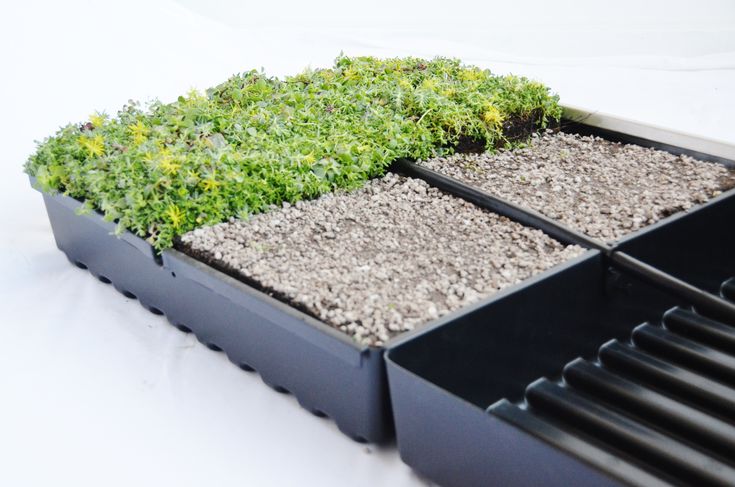
See construction example
Installation and maintenance of green roofs1020 KB
-
Sempergreen® - sedum carpet
Sempergreen® - sedum carpet for roof slopes 1:5–1:50
-
Sempergreen® - Sedum Carpet Type T
Sempergreen® is a sedum carpet for roof pitches 1:3–1:5.
- roofs
- Green roofs and platforms
- Green roof is beauty and benefit
- Types of green roof structures
- Green roof products
- Sedum roofs Sempergreen
- Sempergreen® - sedum carpet
- Sempergreen® - sedum carpet, type T
- Sedum-moss roofs Veg Tech
- Waterproofing and root protection of green roofs
- Drainage and catchment layers for green roofs
- Green roof accessories
- Sedum roofs Sempergreen
- Green roof maintenance
- Foundations
- Balconies
- Exploited roofs
- Bituminous mastics, primers and masses
- Adhesive tape and sealing tapes
- Other products
- Technical data and safety information
- Certificates
Roof plants Sedum carpet Sedums and perennials for green roofs
Roof articles
Plants on the roof.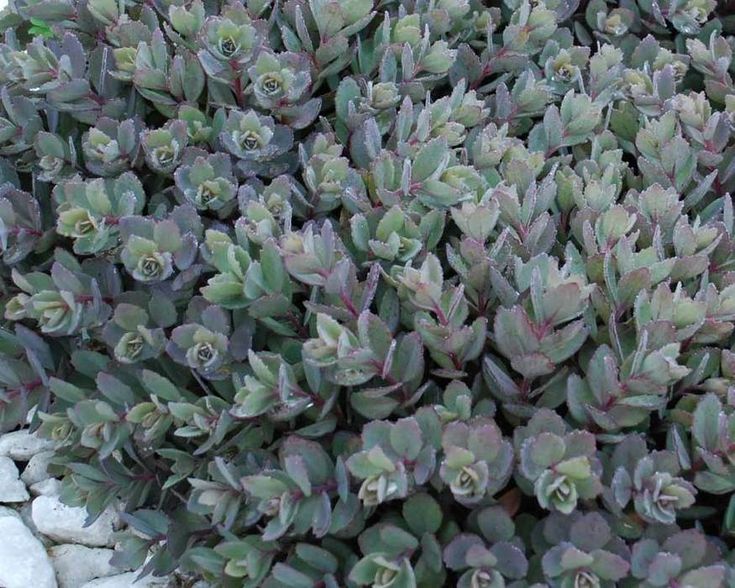 Sedum carpet
Sedum carpet
Are you planning to build a "green roof" on your property?
On the roof surface, green spaces are exposed to direct sunlight, heat and winter cold. It is desirable that the plant layer be light in weight, the plants take root well and grow on a small layer of substrate. Usually, unpretentious, low-growing creeping or climbing types of perennials are selected for roof gardening.
Pay attention to the roof with sedum carpet
Stonecrops or sedums are unpretentious succulent plants with succulent leaves and beautiful flowers. Succulents are able to retain moisture, resistant to heat and sun. For the growth of sedums, a substrate thickness of 15 cm is sufficient.
| In warm countries, sedums germinate on a thin layer of soil, as in the case of damaged roof tiles. |
In nature, there are several hundred species of sedum. More than a dozen types are suitable for green roofs in the conditions of central Russia. Abroad, breeders breed resistant hybrids and grow sedum carpets for roof gardening.
Abroad, breeders breed resistant hybrids and grow sedum carpets for roof gardening.
Alpine and climbing plants are combined with sedums - saxifrage, tenacious, bryozoans. You can pick up plants with different flowering periods and get a beautiful roof for the whole summer.
The main advantages of sedums
- Unpretentious
- Sedums can be used to create a decorative plant cover with permanent flowering.
- Required soil substrate thickness - 15 cm.
Please note that creating sedum carpets on roofs is not a budget solution due to their cost. Sedum carpets are produced abroad. In Russia, sedums are grown in small farms About sedums from a nursery on order.
Some popular species of sedums and perennials for roof gardening
Stonecrop caustic. Stonecrop is a common stonecrop in Russia, and one of the most popular varieties of sedum for greening roofs. Grows quickly into a dense mat. In the first year of cultivation, stonecrop forms clumps of short (up to 3 cm) shoots with fleshy small leaves (about 5 mm), densely covering the stem. The first year stonecrop caustic does not bloom. In the second year, shoots of stonecrop elongate to 10 cm tall. In early June, plantings are covered with numerous golden star-shaped flowers. At the time of flowering, the rug of caustic stonecrop turns bright yellow. Stonecrop can bloom until late autumn. Stonecrop propagates by seeds or division of the bush. It is enough to separate a small piece from the curtain and plant it in a moist shaded place. After the stonecrop takes root, it can be transplanted into the sun. Stonecrop is an unpretentious plant that does not require watering or special conditions for wintering. It spends the winter under the snow, and with the advent of spring it will grow into a lush bright green rug. Stonecrop needs full sun and permeable soil to grow successfully. |
Stonecrop Kamchatka Stonecrop Kamchatka is one of the most unpretentious types of stonecrops. The birthplace of this stonecrop is the Far East of Russia. Stonecrop Kamchatka is well suited for cultivation in central Russia. |
Spanish sedum Spanish stonecrop grows rapidly, forming a dense mat of shoots about 10 cm high. |
Fine stonecrop Stonecrop thin - forms a dense mat of short (up to 3 cm) stems, densely covered with small bluish-green leaves 5-6 mm long, about 1 mm wide. Young leaves are reddish. |
Red-leaved tenaciousA perennial creeping plant "creeping tenacious" is well suited for roof greening. The tenacious plant was named because of its extreme unpretentiousness and drought resistance. The plant grows quickly without much care, even on infertile stony soils. It likes direct sun very much, but can also grow in the shade. Propagated by seeds and division of the bush. Red-leaved tenacious - a variety with dark reddish-purple leaves.  In late April and early May, it blooms with elegant blue flowers. In late April and early May, it blooms with elegant blue flowers. Red-leaved tenacious looks very nice in combination with green, white and variegated plants. The main difference between the red-leaved tenacious and other varieties is that when self-sowing plants grow with such burgundy leaves. The remaining varietal survivors do not retain their characteristics when sown. |
Styloid bryozoan Another interesting perennial plant for arranging a beautiful "green" roof is styloid bryozoan. |

 In the shade, sedum takes on an untidy appearance.
In the shade, sedum takes on an untidy appearance.  It reproduces by self-seeding.
It reproduces by self-seeding. 
